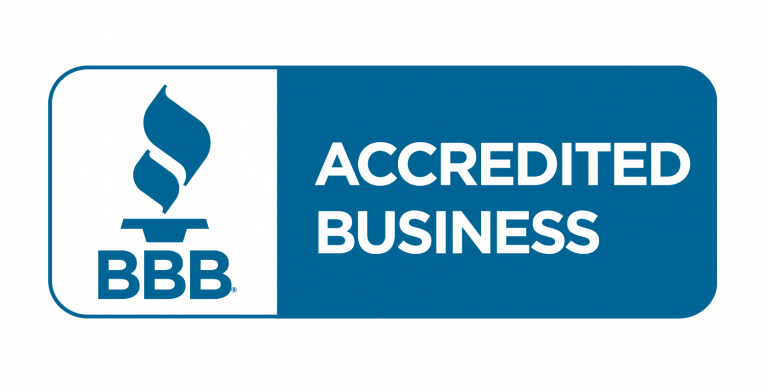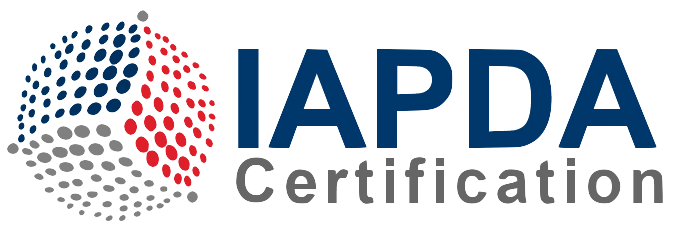Home » Debt Relief Solutions

Living debt free is the best way to live your life. Get informed on ALL your options before making any life changing financial decisions.
Talk to a certified debt consultant. +1 (866) 606-6413

Learn about all the different types of debt and how they apply to you.
There are several different types of debt, including:
Secured Debt: Debt that is secured by an asset, such as a home or car. If the borrower defaults on the loan, the lender can seize the asset to recover the debt.
Unsecured Debt: Debt that is not backed by an asset, such as credit card debt or medical bills. If the borrower defaults on the loan, the lender may take legal action to recover the debt, but cannot seize any specific asset.
Revolving Debt: Debt that can be borrowed, repaid, and borrowed again, such as credit card debt. The borrower is typically required to make minimum monthly payments, and interest accrues on any outstanding balance.
Installment Debt: Debt that is repaid in equal, periodic installments over a fixed period of time, such as a mortgage or car loan. The borrower typically pays the same amount each month until the debt is fully repaid.
Consolidated Debt: Debt that has been combined into a single loan, typically with a lower interest rate and/or lower monthly payments than the individual debts. This can be done through a debt consolidation loan, balance transfer credit card, or other means.
Payday Loans: Short-term loans with high interest rates, typically due on the borrower’s next payday. These loans are often used by people who need cash quickly and have limited access to other forms of credit.
Student Loans: Loans used to finance education expenses, typically with lower interest rates than other forms of unsecured debt. Student loans can be either federal or private, and often have flexible repayment options.
Secured Debt:
Secured debt is a loan backed by an asset, such as a home or car. Because the lender has the right to seize the asset if the borrower defaults on the loan, secured debt typically carries lower interest rates than unsecured debt.
Common examples of secured debt include mortgage loans, auto loans, and home equity loans. In each case, the lender uses the asset being financed as collateral to secure the loan.
One of the advantages of secured debt is that it can be easier to qualify for than unsecured debt. Because the lender has the security of the asset, they may be more willing to lend to borrowers with lower credit scores or less stable income.
Another advantage is that secured debt can often be used to finance large purchases or projects, such as buying a home or starting a business. Because the interest rates are lower than unsecured debt, borrowers can often save significant amounts of money on interest charges over the life of the loan.
Unsecured Debt:
Unsecured debt is a type of loan that is not backed by any collateral, such as a home or car. Because there is no asset for the lender to seize if the borrower defaults on the loan, unsecured debt typically carries higher interest rates than secured debt.
Common examples of unsecured debt include credit card debt, personal loans, and medical bills. In each case, the lender extends credit to the borrower based on their creditworthiness and ability to repay the loan, rather than any collateral.
One of the advantages of unsecured debt is that it can be easier to apply for and receive than secured debt. Because there is no collateral involved, the application process can be faster and less involved than applying for a secured loan.
However, there are also risks associated with unsecured debt. Because the interest rates are higher than secured debt, borrowers can quickly accumulate large amounts of debt if they do not make regular payments.
In conclusion, unsecured debt can be a useful tool for borrowing money, but it also carries risks. Borrowers should carefully consider their ability to repay the loan and the impact of high-interest rates before taking on unsecured debt, and should be prepared to make regular payments to avoid falling into a cycle of debt.
Installment Debt:
Installment debt is a type of loan where the borrower receives a lump sum of money and repays the loan in fixed, regular payments over a set period of time, usually with interest. Examples of installment debt include car loans, personal loans, and mortgages.
Unlike credit card debt, which is typically unsecured and carries a variable interest rate, installment debt is usually secured and carries a fixed interest rate. This means that borrowers can accurately budget and plan for their monthly payments, making it easier to manage their finances.
One of the benefits of installment debt is that it can be a useful tool for financing large purchases, such as a car or a home, without having to pay for the full cost upfront. It can also be a good way to consolidate and pay off existing debts with a high-interest rate.
In conclusion, installment debt can help finance large purchases or consolidate debts. However, borrowers should be mindful of their ability to repay the loan and ensure they take on debt responsibly. With careful planning and financial management, installment debt can be a helpful tool for achieving financial goals.
Consolidated Debt:
Consolidated debt is a type of loan that combines multiple debts into a single loan with one monthly payment. This can be a useful tool for simplifying debt management and potentially reducing interest rates and monthly payments.
There are several ways to consolidate debt, including taking out a personal loan, transferring balances to a credit card with a lower interest rate, or utilizing a debt management plan. Each method has its own advantages and disadvantages, and borrowers should carefully consider their options before making a decision.
One of the benefits of consolidated debt is that it can help borrowers save money on interest charges. By consolidating high-interest debts into a single loan with a lower interest rate, borrowers can potentially save thousands of dollars over the life of the loan.
Another benefit is that consolidated debt can simplify debt management. Rather than juggling multiple payments and due dates, borrowers can make a single monthly payment towards their consolidated debt, making it easier to stay on top of their finances and avoid missed payments.
In conclusion, consolidated debt can be a helpful tool for simplifying debt management and potentially reducing interest rates and monthly payments. However, it’s important for borrowers to carefully consider their options and practice responsible financial habits to avoid falling back into debt.
Credit Card Debt:
Credit card debt can be a significant burden for many people, especially with high interest rates. While credit cards can be a convenient way to make purchases and earn rewards, carrying a balance can quickly become costly.
Credit card interest rates can vary widely, but the average rate for credit cards in the United States is around 16%. If you carry a balance on your credit card, this interest rate can add up quickly, leading to a cycle of debt that can be difficult to escape.
High interest rates can make it challenging to pay down credit card debt, even when making regular payments. For example, if you have a $5,000 balance on a credit card with a 16% interest rate and only make the minimum payment each month, it could take you over 13 years to pay off the debt and cost you over $6,800 in interest charges alone.
It’s also essential to avoid accumulating additional credit card debt, which can compound the problem. Try to use credit cards sparingly and only make purchases that you can pay off in full each month.
In conclusion, high interest rates can make credit card debt a significant challenge to manage. To avoid falling into debt, it’s essential to be mindful of your spending, make regular payments toward your balance, and consider alternatives like balance transfers or debt consolidation. With careful planning and discipline, it is possible to manage credit card debt and achieve financial stability.
Payday Loans:
Payday loans are a type of short-term, high-interest loan that is typically due on the borrower’s next payday. While they can provide quick access to cash for those needing emergency funds, payday loans can also be very expensive and trap borrowers in a cycle of debt.
The interest rates on payday loans are often much higher than traditional loans, with annual percentage rates (APRs) ranging from 400% to over 1,000%. If a borrower takes out a payday loan and cannot repay it in full by the due date, they can quickly accumulate large amounts of debt.
In addition to high interest rates, payday loans often come with additional fees and charges, such as loan origination fees or late payment fees. These fees can add up quickly, making it even more difficult for borrowers to repay their loans.
Because of these high costs, payday loans are often criticized for preying on vulnerable borrowers who may not fully understand the terms of the loan. Many states have implemented regulations or outright bans on payday lending to protect consumers from these predatory practices.
In conclusion, payday loans can be a quick source of cash for those in need, but they can also be very expensive and trap borrowers in a cycle of debt. Borrowers should carefully consider their options and fully understand the terms and costs of the loan
before taking out a payday loan. It’s often better to explore other options, such as a personal loan or borrowing from friends or family, before turning to payday loans.
Student Loans:
Student loans are designed to help students pay for higher education costs, such as tuition, books, and living expenses. They can be obtained from the federal government or private lenders, and typically come with lower interest rates than other types of loans.
One of the benefits of student loans is that they can provide access to education for those who may not have the financial resources to pay for it upfront. This can lead to higher earning potential and greater opportunities for career advancement.
Federal student loans also come with flexible repayment options, including income-driven repayment plans that adjust monthly payments based on a borrower’s income and family size. They also offer loan forgiveness programs for those who work in public service or certain other fields.
However, it’s important to remember that student loans are still debts that must be repaid, with interest. Borrowers should carefully consider their ability to repay the loan and only borrow what they need. It’s also important to understand the terms and conditions of the loan, including interest rates and repayment options.
In conclusion, student loans can be a useful tool for accessing higher education and improving earning potential, but they should be approached with caution. Borrowers should carefully consider their ability to repay the loan and fully understand the terms and conditions of the loan before taking on debt.







Get your financial freedom back and have a new beginning.
Call us Now: (866) 606-6413

Office Hours
Monday – Friday: 7:00 AM – 7:00 PM PST
Saturday: 8:00 AM – 4:00 PM PST
Debt Management Services
Resources
Privacy
Copyright © 2025 Better Debt Solutions, LLC. All rights reserved.
This company does not actually provide any debt settlement, debt consolidation, or other credit counseling services. We ONLY refer you to companies that want to provide some or all of those services. On average, consumers who successfully complete a debt relief program see average savings of 40% to 60% of their enrolled debt load before program fees. Program fees are calculated based on a percentage of your enrolled debt and typically range from 14% to 27%. Programs are not available in all states, and fees may vary by state. Programs typically run from 24 to 48 months, depending on a consumer’s debt load and individual circumstances. Consumers must save at least 25% of the total amount of each enrolled debt before a debt relief company can make a bona fide settlement offer to a consumer’s creditors. Settlements typically occur every 3 to 6 months, with clients receiving their first settlement within 4 to 7 months of enrollment. Although we cannot guarantee specific results, we work closely with consumers to ensure they are connected with a debt relief provider that can achieve their best possible outcomes. We do not assume clients’ debts, make monthly payments to creditors, or provide tax, bankruptcy, accounting, legal advice, or credit repair services. Please contact a tax professional to discuss the tax consequences of debt relief and a bankruptcy attorney for more information on bankruptcy. Please note that using debt resolution services will likely have an adverse effect on your credit, and you may face collections or lawsuits from creditors or collectors. Additionally, your outstanding debt may increase due to the accrual of fees and interest. Before enrolling, it is essential to read and understand all of your program terms, conditions, and materials. Please note that certain types of debts may not be eligible for enrollment. Also, some creditors may not be eligible for enrollment because they do not negotiate with debt relief companies. Better Debt Solutions, LLC (2525 Main Street Suite 500, Irvine, CA 92614) is accredited by the Better Business Bureau. Contact us today to learn more about how we can help you achieve financial freedom.